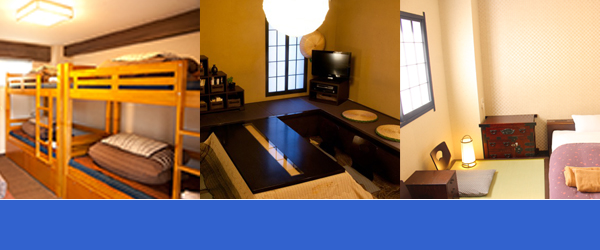For foreigners visiting Japan, distinguishing between the various places of worship scattered throughout the country can be perplexing. In particular, telling apart a “jinja” (Shinto shrine) from a “teras” (Buddhist temple) often leads to confusion. At first glance, these places may appear similar, but they are, in fact, rooted in vastly different beliefs, practices, and philosophies. In this article, we will unravel the keys to differentiate between a jinja and a teras, allowing visitors to fully appreciate and understand Japan’s rich spiritual and cultural tapestry.


Origins and Philosophies
To understand the differences between Japanese Buddhist temples and Shinto shrines, it’s important to be acquainted with their origins and underlying philosophies.
Buddhist Temples:
Buddhism was introduced to Japan in the 6th century AD, originating from China and Korea. This religion, based on the teachings of Siddhartha Gautama, the Buddha, focuses on the path to enlightenment and liberation from suffering. Japanese Buddhist temples, known as “teras” in Japanese, are places of worship and meditation. They are often associated with a specific school of Buddhism, such as Zen, Tendai, or Shingon, which influences their practices and teachings.
Buddhist temples typically house images of the Buddha and other enlightened beings, as well as sutras (sacred texts) and ritual objects. Devotees visit these temples to pray, meditate, and seek spiritual guidance.
Shinto Shrines:
Shintoism is the indigenous religion of Japan and has its roots in animistic beliefs and practices. Shintoism lacks a founder or defined sacred texts like Buddhism. Instead, it focuses on the worship of kami, which are spirits or deities believed to inhabit nature, objects, and ancestors. Shinto shrines, known as “jinja” in Japanese, are places of veneration for these kami.
Shinto shrines are often characterized by torii gates, traditional red gates made of wood or stone that mark the entrance to the sacred precinct. Inside, one can find altars, ritual objects, and sacred pathways leading to areas of worship. Nature plays a fundamental role in Shintoism, and many shrines are located in beautiful natural settings.
Architecture and Design
One of the most evident differences between Japanese Buddhist temples and Shinto shrines is their distinctive architecture and design.
Buddhist Temples:
Buddhist temples are often characterized by intricate and ornate architecture. The main buildings are typically constructed from wood and feature curved roofs and decorative tiles. Many Japanese Buddhist temples are adorned with sculptures, paintings, and Zen gardens designed for contemplation and meditation.
The design of a Buddhist temple tends to be symmetrical and balanced, with an emphasis on precision and aesthetic beauty. Visitors typically enter the temple through a main gate and progress towards the main hall, where the images and altars are located.
Shinto Shrines:
In contrast, Shinto shrines have a simpler and more naturalistic design. The main buildings are usually made of wood, with thatched or cypress bark roofs. The iconic feature of Shinto shrines is the torii gates, often painted in vermilion red.
Shinto shrines are often integrated harmoniously with the surrounding nature. They are located in forested environments and often have paths leading to outdoor worship areas. The gardens surrounding Shinto shrines are less formal than those of Buddhist temples, encouraging a sense of connection with nature and the kami.
Rituals and Practices
Japanese Buddhist temples and Shinto shrines also differ in their rituals and religious practices.
Buddhist Temples:
Rituals at Buddhist temples often include the recitation of sutras, prayers, and the offering of items such as incense, candles, and flowers. Meditation is a fundamental part of Buddhist practice, and many temples offer opportunities for both group and individual meditation.
Buddhist temples also conduct ceremonies such as baptisms, weddings, and funerals, with Buddhist monks playing a significant role in performing these rituals.
Shinto Shrines:
Shintoism emphasizes purification rituals, such as hand and mouth cleansing at a water basin, before approaching the altar. Devotees may also make offerings of rice, sake, sakaki branches, and other items to the kami.
Festivals and ceremonies at Shinto shrines are common and often involve dances, music, and processions. Shinto rituals frequently revolve around life events, such as birth, marriage, and harvest celebrations.
Relationship with Nature and Spirituality
The relationship with nature and spirituality plays a crucial role in the differences between Japanese Buddhist temples and Shinto shrines.
Buddhist Temples:
While Buddhism does not ignore nature, its primary focus is on the path to personal enlightenment and liberation from suffering. Buddhist temples often incorporate Zen gardens, meticulously designed with symbolism but not as closely tied to nature as Shinto shrines.
Spirituality at Buddhist temples centers on personal development, understanding life and death, and the search for truth through meditation and introspection.
Shinto Shrines:
Shintoism is inherently naturalistic. Shinto shrines are located in natural settings, surrounded by trees, forests, and mountains. Kami, revered in Shintoism, are considered spirits of nature, and Shinto rituals encourage a connection with the natural world.
Spirituality at Shinto shrines focuses on reverence for nature and harmony with the kami. Shrines are places where people seek protection, express gratitude for good fortune, and participate in festivals that celebrate the relationship between humanity and nature.
Festivals and Celebrations
Both Japanese Buddhist temples and Shinto shrines celebrate festivals and ceremonies throughout the year. However, the purposes and practices of these events can vary significantly.
Buddhist Temples:
In Buddhist temples, festivals are often related to religious commemorations, such as the Buddha’s birth, enlightenment, or entry into parinirvana (death). Buddhist festivals often involve the recitation of sutras, the offering of items, and participation in religious ceremonies.
One notable example is “Obon,” an annual festival during which it is believed that the spirits of ancestors return to visit their relatives. During Obon, lanterns are lit at temples, and traditional dances, such as “Bon Odori,” are performed.
Shinto Shrines:
Festivals at Shinto shrines tend to focus more on nature and the local community. Many of these festivals celebrate seasonal events, such as the arrival of spring, the harvest, or the cyclical renewal of nature.
A well-known example is “Hatsumode,” the first shrine visit of the New Year, during which devotees express their wishes for the coming year and receive lucky amulets. Another example is “Shichi-Go-San,” a festival celebrating the growth of children at ages 3, 5, and 7.
Coexistence and Mutual Respect
Despite the significant differences in beliefs, practices, and architecture between Japanese Buddhist temples and Shinto shrines, it’s important to highlight that in Japan, these two religions coexist harmoniously. Many Japanese individuals engage in both traditions, using Buddhist temples for life and death ceremonies while visiting Shinto shrines for seasonal celebrations and festivals.
The coexistence of these two religions is a testament to Japan’s cultural openness and its ability to adopt and adapt different belief systems throughout its history.
Conclusion
Japanese Buddhist temples and Shinto shrines are two essential elements of Japan’s religious and cultural landscape. Each has its own history, philosophy, distinctive architecture, and religious practices. Despite these differences, both traditions play a significant role in the spiritual life of the Japanese people and contribute to the richness and diversity of Japanese culture. Whether exploring the serenity of a Buddhist temple or the connection with nature at a Shinto shrine, Japan offers visitors the opportunity to immerse themselves in two unique and complementary religious traditions.








